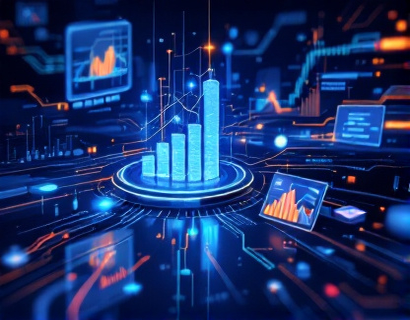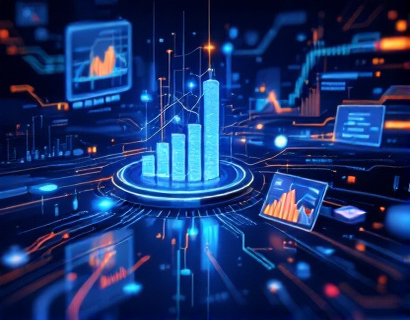Advanced Analytics: Transforming Data into Strategic Insights for Informed Business Growth
In the rapidly evolving business landscape, the ability to transform raw data into strategic insights has become a critical differentiator for organizations aiming for sustained growth and competitive advantage. Advanced analytics dashboards play a pivotal role in this transformation by converting complex data into actionable insights, thereby streamlining decision-making processes and enhancing operational efficiency. This article delves into the transformative power of advanced analytics, exploring how these tools are reshaping the way businesses operate and make strategic decisions.
The Evolution of Data Management
The journey of data management has evolved significantly over the years. From manual spreadsheets to sophisticated data warehouses, the methods of handling and analyzing data have become more advanced and efficient. The advent of big data and the Internet of Things (IoT) has led to an exponential increase in the volume, velocity, and variety of data generated daily. This surge in data has necessitated the development of advanced analytics tools that can process and interpret this vast amount of information in real-time, providing businesses with timely and accurate insights.
Advanced Analytics Dashboards: A Game Changer
Advanced analytics dashboards are at the forefront of this revolution, serving as central hubs for data visualization and analysis. These dashboards integrate data from multiple sources, presenting it in a user-friendly format that allows users to monitor key performance indicators (KPIs), track trends, and identify patterns. The visual nature of these dashboards makes complex data more accessible, enabling non-technical users to derive insights without extensive data analysis skills.
Key Features of Advanced Analytics Dashboards
- Real-time Data Visualization: Dashboards provide live updates on critical metrics, allowing businesses to monitor performance and make immediate adjustments as needed.
- Customizable Views: Users can tailor dashboards to focus on specific areas of interest, ensuring that the most relevant data is always at hand.
- Predictive Analytics: Advanced algorithms and machine learning models forecast future trends, helping businesses anticipate market changes and customer behaviors.
- Integration Capabilities: Dashboards can integrate with various data sources and systems, ensuring a comprehensive view of the organization's operations.
These features collectively enhance the decision-making process, enabling businesses to respond swiftly to market dynamics and internal changes.
Enhancing Operational Efficiency
One of the most significant benefits of advanced analytics dashboards is their ability to streamline operations and improve efficiency. By providing real-time insights, these tools help identify bottlenecks and inefficiencies in processes, allowing for prompt corrective actions. For instance, in manufacturing, dashboards can monitor production lines, detect anomalies, and suggest optimizations, leading to reduced downtime and increased output.
In the service industry, dashboards can track customer interactions, service delivery times, and quality metrics, enabling businesses to enhance customer satisfaction and operational performance. The ability to monitor and analyze these metrics in real-time ensures that issues are addressed promptly, reducing the likelihood of larger problems arising.
Driving Strategic Growth
Advanced analytics dashboards are not just tools for operational efficiency; they are also instrumental in driving strategic growth. By providing deep insights into market trends, customer preferences, and competitive landscapes, businesses can make informed strategic decisions. For example, a retail company can use dashboard insights to identify high-demand products, optimize inventory levels, and tailor marketing campaigns to specific customer segments.
Moreover, predictive analytics capabilities allow businesses to forecast future scenarios, enabling proactive rather than reactive strategies. This foresight is crucial in industries where market conditions can change rapidly, such as finance and technology. By anticipating these changes, businesses can position themselves advantageously, seize new opportunities, and mitigate potential risks.
Case Studies: Real-World Applications
To illustrate the transformative impact of advanced analytics dashboards, consider the following case studies:
A leading healthcare provider implemented an advanced analytics dashboard to monitor patient outcomes, resource utilization, and staff performance. The dashboard integrated data from electronic health records, appointment schedules, and staff schedules. As a result, the provider was able to identify underutilized resources, optimize staffing levels, and improve patient care. The real-time insights led to a 15% reduction in operational costs and a significant improvement in patient satisfaction scores.
In the finance sector, an investment firm adopted a dashboard that integrated market data, portfolio performance, and risk metrics. The dashboard's predictive analytics feature helped the firm identify emerging market trends and adjust investment strategies accordingly. This proactive approach resulted in a 20% increase in portfolio value over a year, outperforming industry benchmarks.
Challenges and Considerations
While the benefits of advanced analytics dashboards are clear, organizations must also be aware of potential challenges and considerations. Data quality is paramount; inaccurate or incomplete data can lead to flawed insights and misguided decisions. Therefore, robust data governance practices and regular data audits are essential to ensure the reliability of the data fed into the dashboards.
Another consideration is the need for user training and support. Advanced dashboards, while user-friendly, still require a certain level of expertise to fully leverage their capabilities. Organizations should invest in training programs to equip their teams with the necessary skills to interpret and act on the insights provided by the dashboards.
The Future of Advanced Analytics
The future of advanced analytics is promising, with ongoing advancements in artificial intelligence (AI) and machine learning (ML) set to further enhance the capabilities of analytics dashboards. AI-driven dashboards will become more intuitive, capable of learning from user interactions and providing personalized insights. ML algorithms will improve in their ability to predict complex patterns and behaviors, offering even more accurate forecasts and recommendations.
Additionally, the integration of augmented reality (AR) and virtual reality (VR) into analytics dashboards is on the horizon, providing immersive data visualization experiences that could revolutionize how businesses interpret and interact with data.
Conclusion
Advanced analytics dashboards are transforming the way businesses manage data, make decisions, and drive growth. By converting complex data into actionable insights, these tools streamline decision-making processes, enhance operational efficiency, and provide a competitive edge in today's fast-paced market. As technology continues to evolve, the potential for advanced analytics to shape the future of business is immense. Organizations that embrace these tools and invest in building the necessary capabilities will be well-positioned to thrive in the digital age.










































